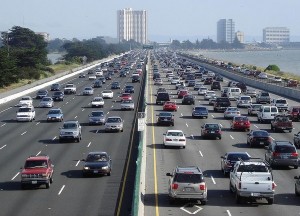A new study by doctors at the Georgia Health Sciences University has shown that golf cart injuries are a leading cause of serious head trauma across the country. The study was published in June and identified a total of 68 patients treated for golf cart-related injuries from 2000 to 2009 at GHSU, a level 1 trauma center.
While the study only focused on trauma center patients, more than two-thirds suffered severe head injuries associated with loss of consciousness, hemorrhage or skull fracture. Nearly 60 percent of the trauma patients treated were children around the age of 9. In 59 percent of the injuries treated among victims over the age of 16, alcohol was found to be a factor. Around 38 percent of the victims suffered injuries from being ejected from the golf cart, with roll-over accidents causing around the same number of tragedies. The last 16 injuries were sustained in collisions with motorcycles and stationary objects.
The study noted that with the use of golf carts and buggies of low speeds in many retirement communities, like The Villages, most drivers are passengers are failing to wear helmets and protective gear that could keep them safe from injuries. Golf carts are usually not equipped with doors and lack certain safety features like seat belts, mirrors and lights. The fact is that golf carts are one of the less stable modes of transportation and unexpected rollovers and ejections are very likely to happen. Being ejected from a golf cart going 20 miles per hour can leave victims with grave injuries as a result of a hard fall.
A previous study performed in 2008 by the Center for Injury Sciences at the University of Alabama peered into the estimated 48,255 golf cart-related injuries that happened across the U.S. from 2002-2005 and identified the most common injuries that have caused a 130 percent jump in golf cart-related injuries from 1990-2006. The results showed that golf cart injury victims are highest amongst the 10- to- 19-year-olds as well as people over the age of 80.
The most common diagnosis for lower extremity and hip injuries were found to be cuts and bruises. Fractures were most common in shoulder and upper extremity injuries and intracranial injuries associated with the head and neck were most commonly defined with concussions and hemorrhaging.
The researchers at GHSU said the main issues associated with the injuries described in these studies seem to be the vehicle design safety, driver competence and injury prevention. For residential communities like The Villages, these are huge issues when traveling to community destinations off the golf course like grocery stores, restaurants, the bank or even swimming pools and tennis courts. A combination of added features can make your slow-speed buggy more user friendly, such as front wheel brakes, adjusting the steering wheel position for better balance, installing safety belts and wearing safety helmets.
Remember to never allow children to use a golf cart unsupervised.
In the 90s the U.S. saw an average of 5,000 golf cart-related accident injuries in a year, but today with the use of golf carts on roadways outside the golf course, we are seeing and upward movement of 13,000 golf cart accident injuries a year. An estimated 43,000 residents in The Villages own golf carts for the purposes navigating through their community. Residents use their golf carts as an alternative form of travel or some use them as a hobby, like the Streetrod Club that is known for reconstructing their carts to resemble classic cars, vintage speedsters and even military-inspired Hummers.
Golf carts usually max out at a speed of 20 miles per hour, but it is possible to rebuild a golf cart to perform at higher speeds, sometimes climbing up to 40 miles per hour, which makes getting around easier, faster and less safe. Golf carts were not originally intended for this sort of use, so in addition to installing proper safety features it is vital to obey Florida’s traffic laws. The Villages offers brochures that can educate you on how to remain safe when traveling on your golf cart and they even offer a Golf Cart Safety Clinic.
Within the last five years, it has been estimated that nearly 10 residents of The Villages have been killed due to golf cart-related accidents. The dangers associated with golf carts are very real, so it is important to always err on the side of caution by driving safely and using keen judgment.
Continue reading
 Last year there were eight deaths and about 11,400 injuries nationally from fireworks, according to a recent report by the Consumer Product Safety Commission. To help protect yourself and those you love from fireworks injuries this summer, please familiarize yourself with the following safety tips:
Last year there were eight deaths and about 11,400 injuries nationally from fireworks, according to a recent report by the Consumer Product Safety Commission. To help protect yourself and those you love from fireworks injuries this summer, please familiarize yourself with the following safety tips: Florida Personal Injury Lawyers Blog
Florida Personal Injury Lawyers Blog






